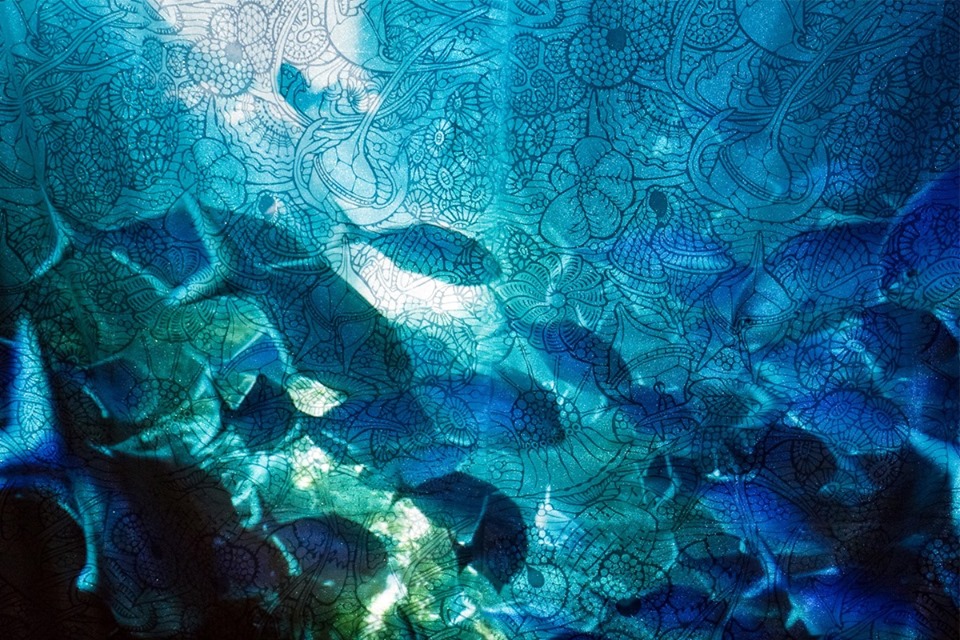

For the past five years, Eveline Kolijn has filmed underwater video footage, mostly in the Caribbean and around coastal shores, capturing the beauty and degradation in the ocean and the human impact on reefs and seashores. This footage is projected onto a translucent veil that is hand-printed with reflecting mica in a 4×4’ relief-cut tiling pattern, depicting a network of plankton that represents the web of life.
EMMEDIA Gallery and Production Society Exhibition notes
No definition of algae is generally accepted. One definition is that algae “have chlorophyll as their primary photosynthetic pigment and lack a sterile covering of cells around their reproductive cells”.[2] Although cyanobacteria are often referred to as “blue-green algae”, most authorities exclude all prokaryotes from the definition of algae.[3][4]
Wikipedia
Algae constitute a polyphyletic group[3] since they do not include a common ancestor, and although their plastids seem to have a single origin, from cyanobacteria,[5] they were acquired in different ways. Green algae are examples of algae that have primary chloroplasts derived from endosymbiotic cyanobacteria. Diatoms and brown algae are examples of algae with secondary chloroplasts derived from an endosymbiotic red alga.[6]
Algae exhibit a wide range of reproductive strategies, from simple asexual cell division to complex forms of sexual reproduction.[7]
Algae lack the various structures that characterize land plants, such as the phyllids (leaf-like structures) of bryophytes, rhizoids in nonvascular plants, and the roots, leaves, and other organs found in tracheophytes (vascular plants). Most are phototrophic, although some are mixotrophic, deriving energy both from photosynthesis and uptake of organic carbon either by osmotrophy, myzotrophy, or phagotrophy.
